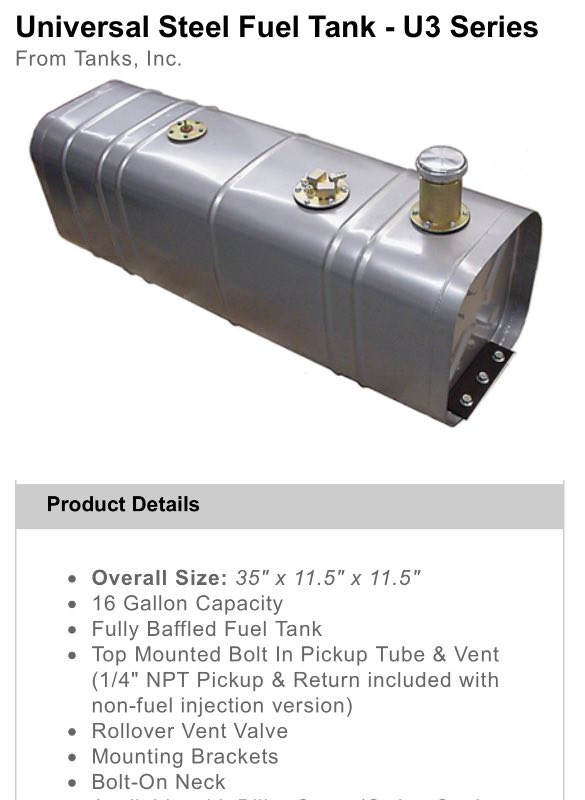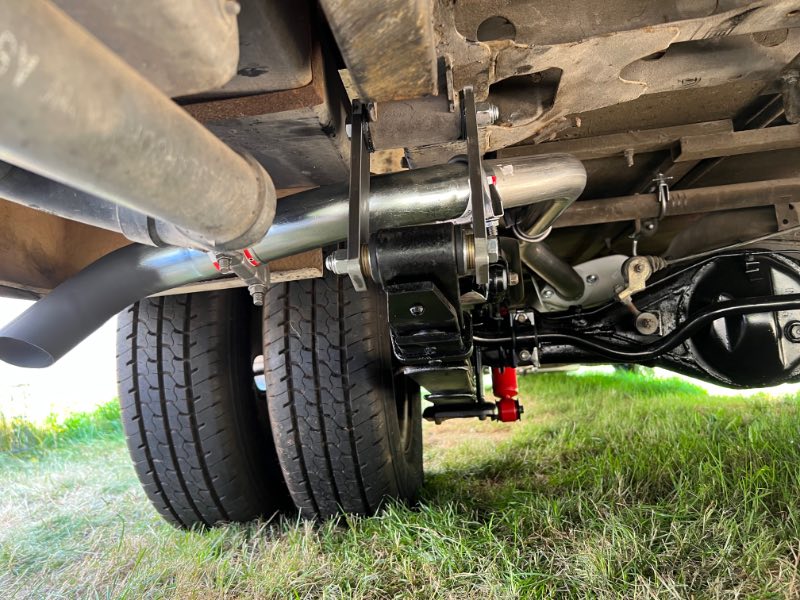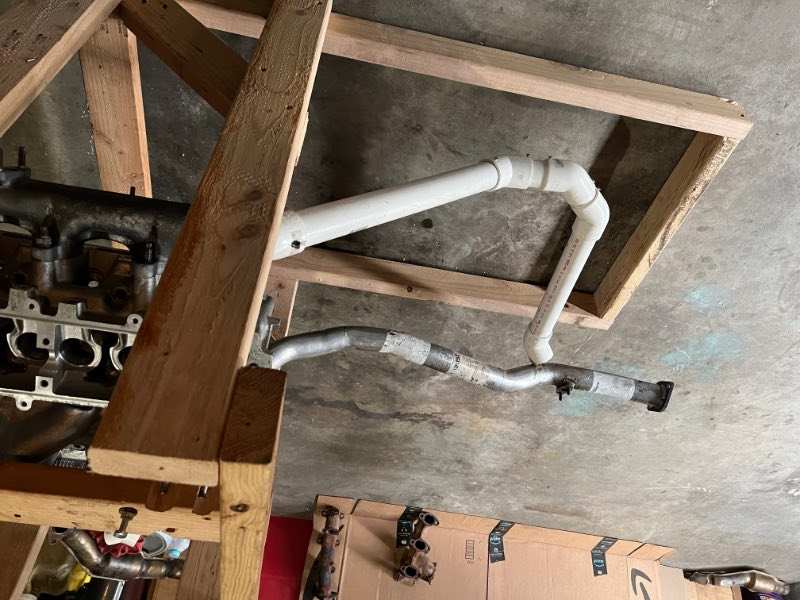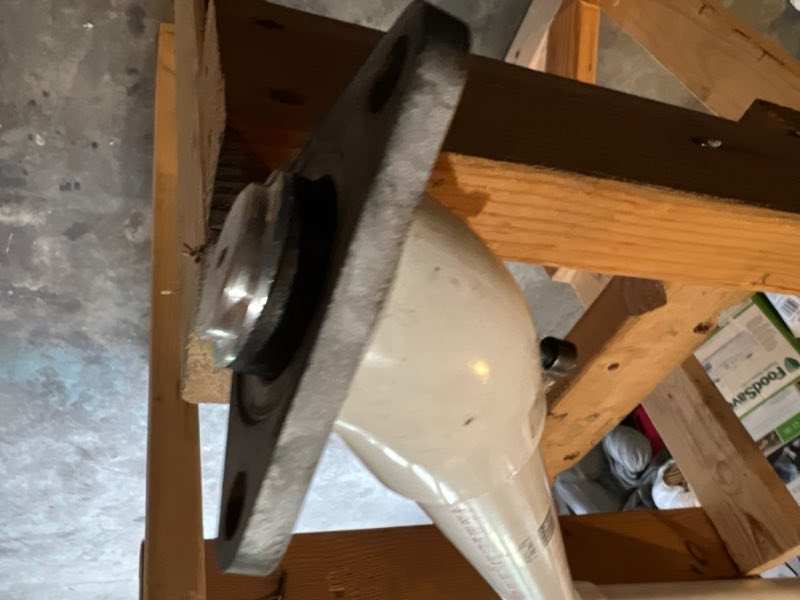
Ssunrader
Toyota Advanced Member-
Posts
25 -
Joined
-
Last visited
About Ssunrader

Previous Fields
-
My Toyota Motorhome
‘91 Sunrader 21’, rear bath
-
Location
Downtown Seattle
Profile Information
-
Gender
From Outerspace
-
Interests
Camping, engineering.
Recent Profile Visitors
The recent visitors block is disabled and is not being shown to other users.
Ssunrader's Achievements
Apprentice (3/14)
-
Rare
-
-
-
Rare
-
Rare
Recent Badges
-
Oh, well I suppose that’s a reasonable response after having seen the picture of my shackles before, and reading my amazement at how (poorly made) the original ones were. That picture was taken during the initial assembly where I was verifying angles that will effect the action of the spring/shackle arrangement, since the bushings were trashed prior to that and the positioning of the various parts within the assembly were different. The extended shackles provide a more progressive rate than the original setup with the different (Sunrader installed) geometry that they provide, that is the only real benefit that I could see from the change from oem Toyota geometry. Nice job trying to dodge what was said earlier, you’re not getting off that easy. Now what if the OP was a trained concert pianist and had great skill and talent, yet had no experience with metalworking? Picture a situational where, upon your advice, one went and got a 4” grinder, and went to town on that frame, then when the harbor freight goggles fogged up while working in an awkward position and oops, there’s a notch in the frame now. Oh, and it would be in a place that would be a fulcrum point very near where the air bags would be mounted… What I would recommend to you is to not assume things about people you couldn’t possibly know. I am not going to describe my background on the internet, to you, but trust me, I am doing just fine, also those washers are just fine too! The 14,000 pounds of pull up from the fasteners that are at 80% of their proof strength are keeping them in place pretty well.
-
“It would take extreme effort to damage the frame rails. Not so sure about that, have seen otherwise. Myself, I would just make a 45 degree angle cut in those tacked on pieces and not go near the surface of the frame. An angle cut but leave a 1/4” of the straight part where it is closest to the frame. _______/ \________ The Air Lift company says that there should be a minimum 1/2” of clearance around the rubber springs when inflated to 75 psi. Looks like that wasn’t as much of a problem from the pictures.
-
I would say the same thing, but unless you’re familiar with metalworking, it may be more of a hazard to risk grinding into the frame and creating a stress riser. these frames flex a lot, and I wouldn’t feel comfortable with a knick or gouge in mine I know. Maybe leave some of the welds and clean it up later, if you do decide to remove that tacked on steel tube, or just leave them. They shouldn’t have welded on a frame anyways! How much do the airbags in that 7113 or whatever kit really expand in the radial dimension? Do you even need the extra space? I have watched those types of airbags on semi trucks and they seem to maintain a constant diameter. Might be better off cutting down the spring brackets in the kit and making new mounting holes if they don’t expand outward.
-
I found this metal tank that will fit on the outside of the frame, behind the driver’s door. Many have a compartment in that area that can be partially taken. The filler could either be possibly in the wheelwell or inside the compartment. https://www.tanksinc.com/index.cfm/page/ptype=product/product_id=128/category_id=133/mode=prod/prd128.htm The upper part of the volume could still be used for storage of a tool box, or another panel placed over the tank to close out the compartment. Not sure I would want that much fuel on the outside of the frame myself, the original tank is tucked away in a fairly safe spot.
-
Those shackles are just some 3/8” x 1-1/2” steel flat bar I had here and drilled them to match the junky ones that came on it. I found the grade 8 bolts at an industrial hardware store. They are 5-1/2” eye to eye, same as the ones that came out, and used a polyurethane bushing kit. Also have an airbag setup on there too, highly recommended, can adjust to your situation.
-
I have gone through the cylinder heads on our ‘91, and replaced the exhaust valves, springs with oem parts to be able and regain the ability to have a proper adjustment using the (limited) available shims. At the same time, I modified the intake ports, mostly on the roof, around the guide bosses. Also took the time to unshroud the exhaust valves in the chambers, and polish the chambers, relieving the sharp edges. After doing some research, I determined that the original injectors may be struggling after the headwork and exhaust modifications. I chose a 20% larger set of injectors instead of messing around with raising the fuel pressure. The new injectors also have multiple nozzles vs the original ones, for improved atomisation. The exhaust was changed to eliminate the congestion around the number 6 cylinder. This involved making a full sized mock up of the obstacles and making a few trips to a good exhaust shop nearby. The result is now dual 2-1/4” down pipes that merge just ahead of the original catalyst flange. No egr now either. The rest of the system is a Pace setter with an additional resonator, and more straight tubing to accommodate the longer wheelbase. The rig drives great after a few drive cycles in order for the system to acclimate itself. A gauge hooked up to the O2 sensor indicates proper mixtures, and if it had more power at open throttle, I would be concerned for the transmission’s life expectancy. Next is to make some distance runs at freeway speeds and check the gas mileage, maybe do some tuning if part throttle isn’t optimal on long hills.
-
They are all so old that getting parts is becoming a real concern. We bought our ‘91 V6 Auto Sunrader recently and have been spending LOTS of time going through it, and it was a decent specimen to start with. Plenty of areas needed attention; engine exhaust valves had no clearance despite a recent trip to the dealer to verify that, which brings a cylinder head r&r job, with new exhaust valves, springs, custom exhaust system to remedy over heating of heads/valves with the loads these heavy are under. Finding a set of replacement exhaust manifolds proved difficult considering the age of the parts, and the conditions they’d been subjected to. Many other parts will just be hard to find after 30 years, so get one that’s in great shape or suffer later. Ours has the original light bulbs everywhere, all the headlight retaining screws are well rusted in place. Just be ready/prepared to jump in and work on them…
-
I’m dealing with dead cab A/C, and am looking at maybe upgrading the system to allow for a rear condenser. That wouldn’t help while parked/camping however… Newer semi trucks use electric A/C, 12/24V, but are pretty expensive, and the batteries to enable all night use would be even more expensive. Neat though. The Sunrader roof just doesn’t seem like a good idea to put much weight on imo. The composite construction is only as good as the urethane foam can maintain a decent bond to the fiberglass, once that has failed, won’t be very strong at all.
-
Ok, so I spoke too soon about the “bolt on” part regarding the Jaguar alternator swap. As it turns out, the Jaguar part requires an offset extension to the lower bracket in order to be usable on the 3.0. The stud used to attach the main power cable is also larger, but that is a bit easier to adapt. i will post a picture of the adapter drawing used to attach it to the original slotted bracket when I get it sorted out, in the event that someone else is looking to go with the swap.
-
Don’t know if the op ever looked at the responses so far, but I just found that an oem Jaguar XJ6 (93-97) alternator is rated at 120A, and is a bolt on replacement for our feeble 60A alternators. Keep in mind the original ones were specified for a pickup, so engine ecu, headlights, fan, nothing else. Can be ordered from anywhere rebuilt for about $130.






